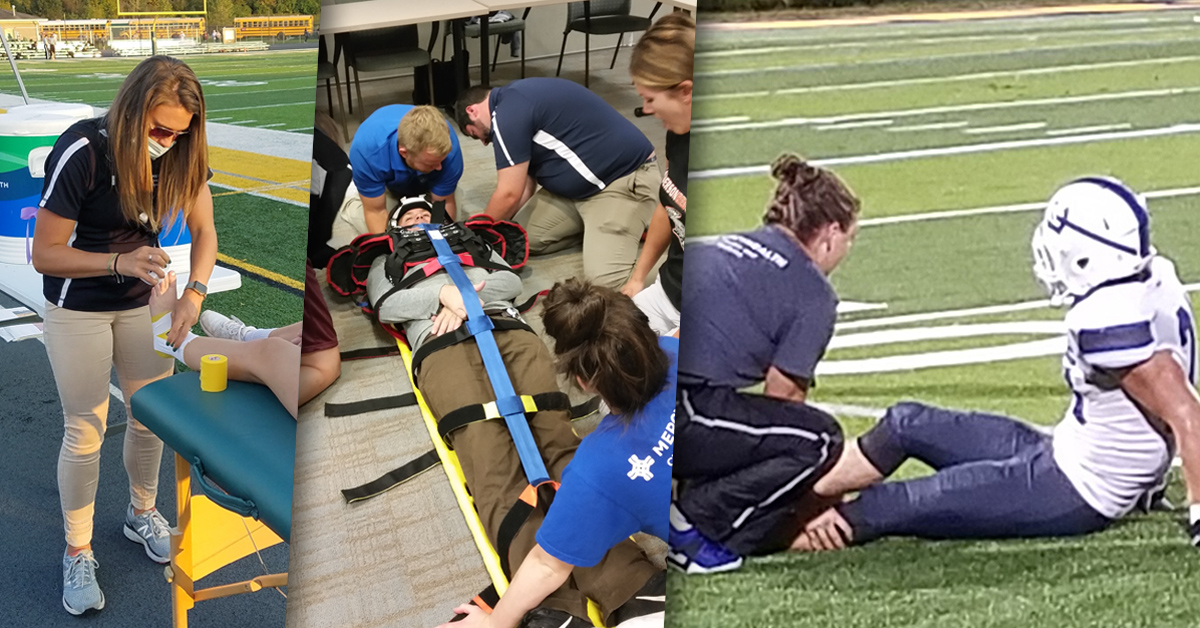Your knees are your body’s largest joints. They carry the entire weight of your upper body. Your knees are also constantly bending and taking pressure off other leg bones.
Because your knees are always hard at work, they experience wear and tear throughout your life. This wear and tear is deterioration, and it can be painful. Fortunately, there are some ways to treat it. But first, you can protect your knees by knowing the first signs of failure.
Why do knees deteriorate?
Your knees usually begin to deteriorate because of:
- Your age: The most common types of arthritis to cause knee deterioration and pain in aged knees include osteoarthritis (worn out cartilage), rheumatoid arthritis (autoimmune disease), gout (acid buildup in joints) and septic arthritis (infected knee joint).
- An injury: Overuse and unexpected twists from sports and activities cause deterioration. These injuries include ACL tears, fractures, torn meniscus, bursitis and tendinitis.
- A malfunction: Genetics and age can cause parts of your knee to function poorly. Your kneecap could slip out of place. A piece of bone or cartilage can break off and float in the joint space. Tissue around your hip or knee can tighten and rub against bone, resulting in pain.
Signs and symptoms of knee problems
Knee pain can affect your daily life. At times, your knees may feel pain because you’ve only overused the joints.
These are signs and symptoms of knee problems that may need attention:
- Mild stiffness
- Minor swelling
- Popping sensation
- Temporary weakness
- Inability to fully straighten
These issues might worsen by themselves through home treatment such as rest, icing and exercise. If that happens, see a health care provider. If you can’t put any weight on your knee or you have extreme knee swelling (especially with a fever), seek emergency care.
Exercises you can do to prevent knee surgery
Avoid serious knee problems by making your knees stronger with easy home exercises. Try these three targeted exercises:
- Sit and stand: Sit upright on a sturdy chair. Squeeze a small ball between your knees so you can feel the muscles working inside your knees and thighs. While squeezing, stand up slowly. Slowly sit back down. Do two sets of 10 squeezes.
- Step-ups: Stand sideways in front of a staircase. Hold on to the wall or banister. Put the leg closest to the stairs on the first step. Straighten the leg on the step to slightly lift your other leg. Bend the leg on the step slightly to lower your other leg. Do this leg bend 10 times and switch legs.
- Squats: Correctly doing squats builds leg and hip strength. Stand with your back against a wall with your feet shoulder-width apart. While your back is flat against the wall, slide down to a semi-sitting position. Hold the squat for 10 seconds (or longer) and push back up using your thigh muscles. Don’t squat too low.
Gentle cycling strengthens the muscles that support your knee, too. Cycling can be an ideal activity that puts little pressure on your knee joints.
What else you can do to prevent knee surgery
Knee surgery is rarely a first choice. Besides targeted exercises, there are other things you can do to prevent having to have knee surgery:
- Weight loss: Every extra pound you carry feels like four extra pounds on your knee joints.
- Acupuncture: This alternative treatment could reduce pain and swelling. It’s not always a fix, but it may help as part of your treatment.
- Injections: Various injectable medications, such as corticosteroid and hyaluronic acid (a natural lubricant that helps osteoarthritis sufferers), may reduce knee inflammation and pain.
- Medications: Manage your knee pain with over-the-counter nonsteroidal anti-inflammatory drugs (NSAIDs). Medications like ibuprofen and naproxen can help lessen swelling and pain.
How do you know if you need knee surgery?
Even if you’ve done all you can do to relieve your knee pain, your health care provider still won’t recommend knee surgery lightly. You need to have X-rays and an imaging test called an MRI to determine if your knee bones or soft tissues are damaged. You may have to have a blood test to rule out other causes for pain.
There are two types of knee surgery:
- Arthroscopic knee procedures: This surgery repairs knee problems that aren’t as severe. A surgeon uses a small camera and small tools to do surgery through tiny incisions.
- Knee replacement surgery: You may have this surgery when you have osteoarthritis and your knee joint is severely worn out. A surgeon replaces some of the surfaces in your knee with artificial ones.
Learn about the different orthopedic knee and leg care services as well as the joint replacement options we offer at Mercy Health.







1 Comment
Post a CommentLyla Peterson
I'm glad you mentioned popping and stiffness as signs you have a knee problem. My knee has been stiff and making cracking and popping sounds ever since I injured it about 3 years ago. I will be sure to keep an eye on it and go to the doctor if the symptoms worsen.